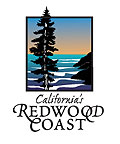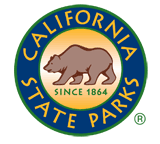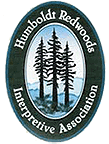On August 27, 1960, Governor Edmund G. “Pat” Brown stood beside some of the tallest trees in the world. His mission: to dedicate the “Avenue of the Giants Parkway.” The 32-mile-long road was not new—it had been around since the days when stagecoaches wended their way through these spectacular redwoods 200 miles north of San Francisco. What was new was a nearby high-speed highway, which made it possible for the old road to become “a serene drive,” Brown said proudly, “where kids and families can cross the road at will, where traffic moves at a far slower pace than on the bypass which is just a few hundred feet away.”
For Save the Redwoods League, the day was a chance to celebrate 40 years of acquiring the roadside groves at the heart of Humboldt Redwoods State Park. The work of protecting the park, which today contains the largest contiguous swath of old-growth redwood forest in the world, was far from complete.
Today, the drive past the enormous trees is world famous — and still wild, pristine, otherworldly and unique on Earth.
Read more about the Avenue’s unique attractions as well as the many milestones that led up to the dedication of the Parkway, and discover 50 ways to explore the sights and sounds of the Avenue of the Giants. You can also download our auto tour.
History of the Parkway
Below are some of the milestones that led up to the dedication of the Avenue of the Giants Parkway.
Note: Audio players include commentary by Dave Stockton, executive director of Humboldt Redwoods Interpretive Association. Stockton grew up on a farm in the Bull Creek area, which is currently part of the park. In his younger days, he worked as a logger and park aide.
| YEAR | MILESTONE |
|---|---|
| 1915 | Improved roads are making California’s north coast more industry friendly. Huge redwoods near what is now the Avenue of the Giants Parkway are being logged to make grape stakes, railroad ties, posts, and shingles. |
| 1917 | Save the Redwoods League founders John C. Merriam, Madison Grant, and Henry Fairfield Osborn visit the site of what is now Humboldt Redwoods State Park. “I would consider the destruction of these trees one of the greatest calamities in whole history of American civilization,” Osborn says. |
| 1918 | Merriam, Grant, Osborn help found Save the Redwoods League. |
| 1920 | With funds from private donors, including Congressman William Kent and National Park Service Director Stephen Mather, the League acquires the first redwood groves along what is now the Avenue of the Giants Parkway. According to advertising executive Newton B. Drury, executive secretary of the League at the time, “There were many, many relatively small holdings along this new highway, and we raised money and purchased them usually, as the saying is, just a jump ahead of the sheriff, or really just a jump ahead of the sawmills.” |
| 1921 | With a donation from a Massachusetts doctor, the League dedicates its first memorial grove to Colonel Raynal C. Bolling, the first high-ranking American officer to be killed in World War I.
In the same year, the League and other civic groups convince the state legislature to appropriate “$300,000 to establish “Humboldt State Redwood Park.’ When Governor William D. Stephens balks at the costs, William Kent loses his temper: “Oh, hell, Bill,” Kent says, “if you can’t get the money any other way, why don’t you fire a few policemen or close the schools for a few days? This is something that can’t wait.” |
| 1924 | Laura Perrott Mahan, a local leader of the movement to save North Coast redwoods, halts illegal logging on Dyerville Flat. |
| 1926 | For years, conservationists had been trying to convince John D. Rockefeller, Jr., to help purchase redwood groves threatened by logging. In 1926 Newton Drury and Pacific Lumber invites the wealthy philanthropist and his family to a picnic in the park. Following that trip, Rockefeller promises Save the Redwoods League $1 million to acquire prime redwood groves. |
| 1928 | California voters overwhelming approve a bond issue that sets aside $6 million to build a state park system. Land acquisitions become easier, because money raised by groups like Save the Redwoods League can now be matched by state funds. |
| 1931 | The League has raised another $1 million from Rockefeller and $800,000 in land and money from smaller donors. With this sum and matching funds from the state, more than 13,600 acres of ancient redwoods in Dyerville Flat and Bull Creek Basin are added to the park.
After WWII—Visitation to the park increases dramatically, as does logging activity nearby. Save the Redwoods League and other groups work hard to acquire additional lands worthy of park status. |
| 1955 | With soils in the upper Bull Creek drainage laid bare by logging, a flood destroys 50 acres and at least 300 trees in the Rockefeller Forest. This disaster, and a series of others that follow, dramatically demonstrate that the tall trees aren’t secure until their whole watershed is protected. [A few years later, the state will decide to buy the entire Bull Creek watershed, which almost doubles the size of the park.] |
| 1960 | The Avenue of the Giants Parkway is dedicated in Humboldt Redwoods State Park. |
Audio Production: Joan Hamilton, Audio Guides to the Outdoors
Project Partners:


